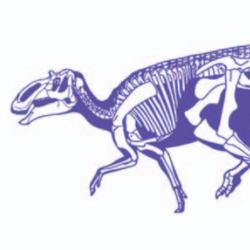Source Institutions
Source Institutions
Add to list Go to activity
Activity link broken? See if it's at the internet archive

In this activity (located on page 2 of PDF under GPS: Baby Dinosaurs Activity), learners will look for a relationship between skull size and body length among various dinosaurs. Starting from a list of dinosaur measurements, learners will compare dinosaur sizes to common objects and create a chart that plots body length against skull length to see if the data predicts other dinosaurs' length from skull size. Relates to the linked video, DragonflyTV GPS: Baby Dinosaurs.
- Under 5 minutes
- 30 to 45 minutes
- 1 cent - $1 per group of students
- Ages 8 - 14
- Activity, Lesson/Lesson Plan
- English
Quick Guide
Materials List (per group of students)
- a dinosaur measurement chart (page 2 of PDF)
- a metric tape measure (10 meter)
- access to household items ranging in size from 10 cm to 2 meters
- paper
- pencils
Subjects
-
Earth and Space Science
-
Earth's History
- Archeology
- Fossils
- Dinosaurs
-
Earth's History
-
Mathematics
-
Data Analysis and Probability
- Data Analysis
- Data Collection
- Data Representation
- Probability
-
Measurement
- Units of Measurement
- Representation
-
Data Analysis and Probability
-
The Nature of Science
-
The Scientific Process
- About Inquiry
- Conducting Investigations
- Gathering Data
- Formulating Explanations
- Communicating Results
-
The Scientific Process
Informal Categories
- Nature and Environment
Audience
To use this activity, learners need to:
- see
- be mobile
- touch
Learning styles supported:
- Involves teamwork and communication skills
- Involves hands-on or lab activities
Other
Components that are part of this resource:
This resource is part of:
Access Rights:
- Free access
By:
Source Collection
- DragonflyTV
Rights:
- All rights reserved, Twin Cities Public Television, Inc., 2007
Funding Source:
- National Science Foundation, 610429
